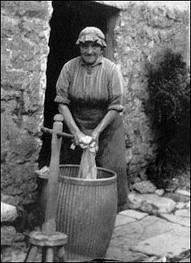“Take-home” Toxic Tort Exposure Claims
November 7, 2011
News and Views on Environmental & Toxic Tort Federal and State Legal Issues and Developments
November 7, 2011
The concepts of “duty” and “foreseeability” figure prominently in any discussion of “take-home” toxic  tort exposure claims. In an insightful article appearing in BNA Toxics Law Reporter, dated November 3, 2011, Christine G. Rolph,Arthur F. Foerster andHans H. Grong of Latham & Watkins discuss “take-home” exposure claims in asbestos litigation. The typical “take-home” plaintiff is a bystander such as the child who claims she was exposed to asbestos while playing in the basement where her father’s work clothes were laundered.
tort exposure claims. In an insightful article appearing in BNA Toxics Law Reporter, dated November 3, 2011, Christine G. Rolph,Arthur F. Foerster andHans H. Grong of Latham & Watkins discuss “take-home” exposure claims in asbestos litigation. The typical “take-home” plaintiff is a bystander such as the child who claims she was exposed to asbestos while playing in the basement where her father’s work clothes were laundered.
Latham & Watkins performs a national survey of “take-home” exposure claims. They observe that a plaintiff’s success in these claims depends heavily on whether the court applies a “relationship” or “foreseeability” analysis. The defense-favorable “relationship” analysis focuses on the nexus between the plaintiff and the defendant company. Without the ability to show a close relationship, the article points out, the “relationship” courts have been unwilling to impose a duty. The plaintiff-favorable “foreseeability” test, on the other hand, focuses on whether a risk of harm reasonably could have been predicted. The application of these two approaches creates very different results. For example, in CSX Transportation, Inc. v. Williams, 608 S.E. 2d 208 (Ga. 2005), the Supreme Court of Georgia declined to impose liability on an employer as the result of the non-employee plaintiff coming into contact with asbestos-tainted work clothing at the employee’s home. Although the Georgia court recognized that “an employer owes a duty to his employee to furnish a reasonably safe place to work,” the court found that this duty did not extend to third-parties who came into contact with the asbestos-tainted work clothing away from the workplace. Clearly, if the George Supreme Court had applied a foreseeability analysis, the result would have been very different. Courts that apply a foreseeability analysis often infer that companies should have known of the risk of harm to secondarily exposed persons because of their knowledge that asbestos exposure is dangerous generally. For example, in Olivo v. Owens-Illinois, Inc., 895 A.2d 1143 (N.J. 2006), the court found that a risk of injury to the employee’s spouse should have been foreseeable to the defendant because it was aware of the risk of injury due to an asbestos exposure of sufficient duration and intensity. The problem with this line of cases is the failure to examine whether the bystander risk was actually reasonably foreseeable as of the date of alleged exposure.
Recently, some “foreseeability” courts have been applying a more rigorous analysis in determining whether a “bystander exposure” risk was foreseeable. In Martin v. Cincinnati Gas & Elec. Co., 561 F.3d 439 (6th Cir. 2009) (applying Kentucky law), the Sixth Circuit held that no duty was owed by the defendant because there was no evidence that a “bystander exposure” risk was foreseeable during the 1951-1963 time frame, when the alleged negligence occurred. In Martin, and other recent cases, courts examined the scientific literature to determine precisely when the defendant “should have known” about any alleged harm. The Sixth Circuit observed that although studies existed regarding exposure of workers and neighbors to asbestos emissions in factories and mines, the first studies on family members of asbestos-exposed workers were not published until 1965. Accordingly, the Sixth Circuit determined that the risk to plaintiff Martin was not foreseeable. In June 2011, an Illinois appellate court dismissed a “take-home” exposure case in Estate of Holmes v. Pneumo Abex, 2011 WL 2517420 (Ill. App. Ct. 4th Dist. June 22, 2011), where the court made clear that the plaintiff, to prevail, had to show that the defendants were “aware of concrete evidence of take-home exposure as opposed to the more prevalent literature involving direct exposure.” Thus, these cases signal a willingness by some courts to more closely examine historical knowledge and scientific information when applying the “foreseeability” test to take-home claims.